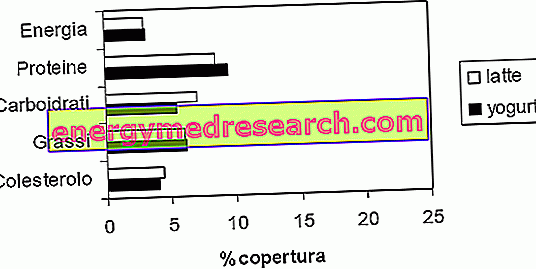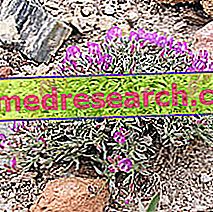Griseofulvin is an antifungal (or antifungal) drug of natural origin, produced by a particular strain of Penicillium .

Voriconazole - Chemical Structure
Griseofulvin is used orally mainly for the treatment of superficial fungal infections.
Indications
For what it uses
The use of griseofulvin is indicated for the treatment of:
- Mycosis of the skin;
- Mycosis of nails (onychomycosis);
- Mycosis of the scalp.
Usually, griseofulvin is used to treat the above fungal infections when local topical therapy has not been effective.
Warnings
Griseofulvin may cause photosensitivity reactions, therefore direct exposure to the sun and UV rays should be avoided during treatment with the drug.
Caution should be exercised when administering griseofulvin in patients with known hypersensitivity to penicillin, as these patients may be hypersensitive to griseofulvin as well.
If treatment with griseofulvin lasts for long periods, it may be necessary to carry out appropriate blood tests and appropriate tests to determine the liver and kidney function of patients.
Griseofulvin may alter the results of the test for the determination of vanilmandelic acid in urine.
Griseofulvin can cause side effects that can alter the ability to drive and / or use machinery, so great care should be taken.
Interactions
Griseofulvin may reduce the effectiveness of oral contraceptives . Therefore, for the whole duration of the treatment with the drug and for at least one month from the end of the same, it is necessary to adopt additional contraceptive methods.
Griseofulvin may reduce the effectiveness of anticoagulant drugs.
The concomitant administration of griseofulvin and barbiturates may decrease the therapeutic efficacy of griseofulvin itself.
Finally, griseofulvin may increase the effects of alcohol, therefore, such association must be avoided.
In any case, it is still necessary to inform your doctor if you are taking - or have recently been - medicines of any kind, including non-prescription medicines and herbal and / or homeopathic products.
Side effects
Griseofulvin can cause various types of side effects, although not all patients experience them. This depends on the different sensitivity that each individual has towards the drug. Therefore, it is not said that all adverse effects occur with the same intensity in each patient.
The main side effects that may occur during the griseofulvin treatment are listed below.
Allergic reactions
Griseofulvin can trigger allergic reactions in sensitive individuals. These reactions can manifest as symptoms, such as:
- Skin eruptions;
- Urticaria;
- Angioedema.
Skin and subcutaneous tissue disorders
Treatment with griseofulvin may promote the onset of photosensitivity reactions, erythema multiforme and toxic epidermal necrolysis.
Nervous system disorders
Griseofulvin therapy may cause:
- Headache;
- Dizziness;
- paresthesia;
- Decreased coordination of movements;
- Peripheral neuropathy.
Psychiatric disorders
Treatment with griseofulvin may cause insomnia and mental confusion.
Metabolism and nutrition disorders
Since griseofulvin can interfere with the metabolism of porphyrins, therapy with the drug may favor the onset of intermittent porphyria.
Gastrointestinal disorders
Nausea, vomiting and diarrhea may occur during treatment with griseofulvin.
Blood and lymphatic system disorders
Griseofulvin-based therapy can promote the onset of:
- Leukopenia, ie the decrease in the number of leukocytes in the bloodstream;
- Granulocytopenia, ie the decrease in the number of granulocytes in the bloodstream.
The appearance of granulocytopenia may make it necessary to stop treatment with the drug.
Infections
Treatment with griseofulvin may promote the appearance of oral candidiasis (thrush).
Other side effects
Other side effects that may occur during treatment with griseofulvin are:
- Asthenia;
- Increased thirst;
- Temporary hearing loss;
- Proteinuria, ie the presence of protein in the urine;
- Worsening of systemic lupus erythematosus in patients suffering from it.
Overdose
If you suspect you have taken an overdose of griseofulvin, you must contact your doctor immediately or go to the nearest hospital immediately.
Action mechanism
Griseofulvin is used orally for the treatment of superficial mycoses, since if it were used topically it would not be able to penetrate the skin and nails and, consequently, could not exert its fungicidal action.
In fact, once taken orally, griseofulvin is able to be incorporated into keratinocytes (the cells that make up keratin precursors) and, finally, into keratin itself. Thanks to the incorporation of griseofulvin into the keratin, therefore, it is possible to prevent the growth of fungal cells. Furthermore, griseofulvin is also able to directly interfere with the synthesis of fungal DNA.
Mode of Use - Posology
Griseofulvin is available for oral administration as tablets.
For a successful treatment, it is essential to scrupulously follow the instructions given by the doctor, both as regards the amount of drug to be taken, both as regards the frequency of administration and the duration of the therapy itself.
However, the dose of griseofulvin usually used in therapy is 500-1000 mg of drug per day, to be taken in a single dose or in divided doses.
The duration of treatment depends on the type and severity of the fungal infection to be treated.
Pregnancy and breastfeeding
Griseofulvin should not be used by pregnant women, as there are insufficient data on the possible effects of the drug in this category of patients.
Breast-feeding mothers, on the other hand, must first seek medical advice before taking griseofulvin.
Contraindications
The use of griseofulvin is contraindicated in the following cases:
- In patients with known hypersensitivity to griseofulvin itself;
- In patients with porphyria;
- In patients with liver disease;
- In patients with systemic lupus erythematosus;
- Pregnant.



